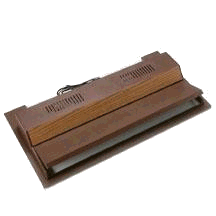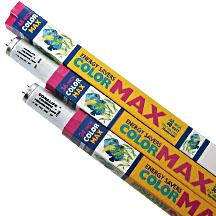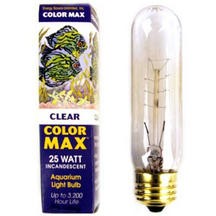LIGHTING THE TANK
Why Light is required
Light is one of the most essential items in an aquarium. It is not only
essential for the growth of plants but also necessary the fish to feel at home. In
nature the light is always present during the day and absent during the night. There are
arguments if the fish sleep or not. I feel that they do sleep, but without closing their
eyes. Probably their system goes in hibernation during the night. Many of the fishes take
rest during the night, except for the nocturnal cat fishes which come out only during the
night time. In nature the light is always from the top of the water surface. Any side
illumination causes plants to grow diagonally across the tank and also the fish loose
their balance and start swimming at an angle. This is not good for the fish. Inside your
home, you would hardly get any sunlight and even if you get it will be only for an hour or
so. Where as plants need at least 10 to 12 hours of strong light for growth. Fish
also like this duration of lighting and can rest the remaining time. It is therefore
necessary to provide some sort of artificial lighting for the tank. This is achieved by
electric lamps.
Light Construction
The tank cover normally houses the lamp thus providing the necessary
lighting from the top. The lamp shall be protected from any water splashing on to the
hot surface as this would cause the bulb to explode due to sudden cooling and also can
cause short circuit. This is achieved by having a semi-transparent plastic plate cover below the
bulb. Semi-transparent plate also prevents a very strong direct illumination.
Some people prefer to hang the bulb above the tank from the ceiling. But care
should be taken to prevent water splashing on the bulb. The light also should have a switching device preferably on the outside of the tank
cover so that it can be switched off during the nights. You can also connect the power chord to a 24 hour timer
device which takes care of automatically shutting off the power during the night time and
switching on by the morning. This would relieve you of the daily routine. Also this is
very useful when you are going overseas or out of town for a few days and you still need
the light for the plants and fish. Typical light fixture together
with built in ballast and starter is shown below, also shown is a hood with filter and light combo:

Hood
| 
Hood
| 
Light with Filter
|
Type of light
There are different types of light availabe such as fluorescent tubes, metal halide
bulbs etc.. Since light rays do not penetrate easily through water, generally the deeper the tank,
the more intense the light source should be. Put simply, the visible light spectrum
(what we see in a rainbow, for instance) combines to form white light. Plants use the
red-orange part of the spectrum, while invertebrates, such as anemones and corals, thrive in
the blue to violet range. Vertebrates, like fish (and us), do well with full spectrum lighting.
Now coming to the type of lighting the most preferable one for plant growth is fluorescent
tubes. They are also cool and do not heat up the water unnecessarily. There are expensive
aquarium lamps made to give light in certain wavelengths, but these hardly make much
difference in plant growth. My advice is 'do not waste money on costly aquarium tubes'.
Normal 2 ft or 3 ft fluorescent tubes are good enough.
- Metal Halides
Halides can be used if you wish to highlight a particular part of the
aquarium in the form of a spotlight. Halides used close to the water surface will need
to have a cover over them to filter out the UV portion of the light and also protect the bulbs
from water splash and potential breakage. Their light intensity can be very high. Typical
halide bulb and an assembly of halide and fluorescent tube is shown below.

Metal halide bulb
| 
Combo Halide and Fluorescent fitting
|
| Typical Ratings |
| 175 Watts |
| 250 Watts |
| 400 Watts |
| 1000 Watts |
|
- Fluorescent Lamps
Available in an array of colours and sizes. These are easily the best source of lights. There
are normal household tubes as well as specially made ones for aquariums. I have used household tubes quite
successfully. These are cheaper and can be changed every 6 months for good effects. However I will list
other types also below.
Fluorescent lights operate by drawing a very large current when they fire up,
and then a current limiting circuit (ballast) limits the amount of current being drawn
so that the tube doesn't overheat. The ballast and tubes are closely matched to each other,
so that you need to keep your tubes at the same wattage if you wish to keep normal tube life
and normal ballast life. Even a few watts can be important here. Always match the ballast
rating with that of the tube you will be using.
- Color Enhancing Lights are designed to display the colors of your fish to their fullest.
These lights have a yellow or pink hue to them and complement the full spectrum lights that have a much
more white appearance. This type is used in either fresh or saltwater. Fish and plants can be more vibrant
with the help of a color-enhancing bulb.
- Full Spectrum Lights are designed to simulate maximum daylight. The intensities may vary
depending on application. Freshwater plant tanks need a full spectrum of light and reef aquariums
need an intense amount of full spectrum in combination with actinic blue light.
- Actinics give off a blue hue to meet the necessary requirements for coral growth. This is beyond
my scope here.

Lighting-Coralife
Colormax
| 
Lighting-Coralife
Spectramax
|
| Typical Ratings |
| 8 Watts -12" |
| 14 Watts -14" |
| 15 Watts -18" |
| 20 Watts -24" |
| 30 Watts -36" |
| 40 Watts -48" |
|
- Incandescent Bulbs
Available as plain and also colour enhancing types, these bring out the best colours
in fishes and some times stimulate the plant growth. Advisable to use in combination with fluorescent
lamps. Normally about 6 inches long and fit into standard hood fixtures.

Incandescent Bulb
-Coralife
| 
Incandescent Bulb
- Color enhancing
|
| Typical Ratings |
| 15 Watts |
| 25 Watts |
| |
| |
|
Next is how much light is required
Rule of thumb is 3-4 Watts of light per gallon of water. Of course this
does not apply to deep tanks. Ensure that the tube can fit into your cover. You can also
try using latest low wattage energy saver bulbs available now. One must make sure necessary
ballast and starter are available. You cannot leave the light on permanently as this would
stress the fishes a lot as they cannot take rest. Plants also cannot take more than 12
hours of light and they need darkness for giving out carbon-di-oxide and absorbing oxygen
for their metabolism.
------------------ END -------------------